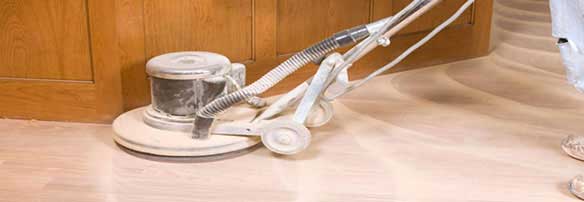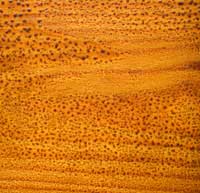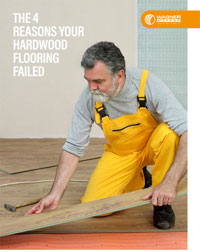Finish with Finesse: MC Before and After for Your Wood Floors

Floor finishes are crucial to the durability and appearance of wood floors. Over a lifetime, homeowners may repeatedly refinish floors, depending on wear.
However, sometimes the initial finish, or subsequent re-finishes, can lead to challenges. As wood finish manufacturers have begun to replace volatile organic chemicals (VOCs) with water-based formulas, the interaction of the two can lead to finish problems as well. However, either type of finish can still produce floor finish problems related to improper moisture content (MC) in or beneath the flooring.
Floor Finish Problems & Causes
Some common challenges with wood floor finishes might include:
 Peeling, bubbles, or blisters: These can occur for a number of reasons: the wood finish may have been excessively burnished; the finish was not allowed sufficient time to dry; the product may be incompatible; the finish perhaps was insufficiently wiped leaving a heavy pigment on the surface; or, the surface may have been contaminated during maintenance by wax or oil-based soap. In any of these situations, an adhesion problem occurs between the flooring and the finish.
Peeling, bubbles, or blisters: These can occur for a number of reasons: the wood finish may have been excessively burnished; the finish was not allowed sufficient time to dry; the product may be incompatible; the finish perhaps was insufficiently wiped leaving a heavy pigment on the surface; or, the surface may have been contaminated during maintenance by wax or oil-based soap. In any of these situations, an adhesion problem occurs between the flooring and the finish.
Roughness: Roughness can result from exposure to moisture, as either a spill or a constant moisture source (such as a plumbing leak), which causes the wood surface grain to rise from the condensation. Poor sanding, edging, and scraping can also lead to a rough finish. Or, finish contamination (like sawdust or lint) during the drying phase can mar a smooth finish.
Excessive and early wear on finish: This can happen when improper care and maintenance occurs on the wood flooring and when dirt and grit are allowed to penetrate the wood flooring surface over an extended period of time. Exposure to excessive moisture and strong soaps and chemicals can also cause early wear on finishes as well as furniture that does not have felt glides underneath them.
Stains/Discoloration: There can be a variety of causes: moisture damage from spills, moisture from a continual source that leads to mildew and decay, adhesives that “bleed” into the wood, pet problems (urine), improper maintenance with water or harsh chemicals, traffic wear patterns, oil soap residue or even exposure to harsh sunlight, which can fade the wood.
Moisture Meters for Wood
Manufacturers, installers, and consumers know to use moisture meters for wood in order to detect excessive moisture before it creates problems. A wood moisture meter is useful in several ways. It reads the MC inside wood, and that reading indicates the state of the wood’s moisture levels. Pinless moisture meters for wood also provide quick-scan capabilities when installers want to check the MC in the wood flooring or in a wood subfloor below without the time-consuming effort of driving pins into the wood and without damaging the wood.

Free Download – 4 Reasons Your Hardwood Flooring Failed
Some moisture meter products even allow building inspectors to check for a relative, comparative moisture reading on numerous types of building materials used in building construction. In other words, moisture meters are vital tools for successful MC management.
Wood moisture levels fluctuate with changes in ambient relative humidity (RH), too. Therefore, stakeholders can use a wood moisture meter to check for excessive changes in the wood’s MC due to naturally-occurring seasonal weather changes. Wood will continually gain or lose moisture to be in balance with its surrounding environment. This state of balance is its equilibrium moisture content (EMC). Being sure that the wood flooring’s MC is adequately balanced with its environment to reach its EMC is the first step for a flawless finish.
Troy Edwards is Technical Service Supervisor for Wagner Meters, Inc., where he oversees manufacturing, quality control and IT service for their electronic measurement products for the building and construction industry. Troy holds an AAS in Electronics Technology and has over 20 years’ experience in various electronic manufacturing and production positions.
Related Posts via Taxonomies
Last updated on May 4th, 2021



